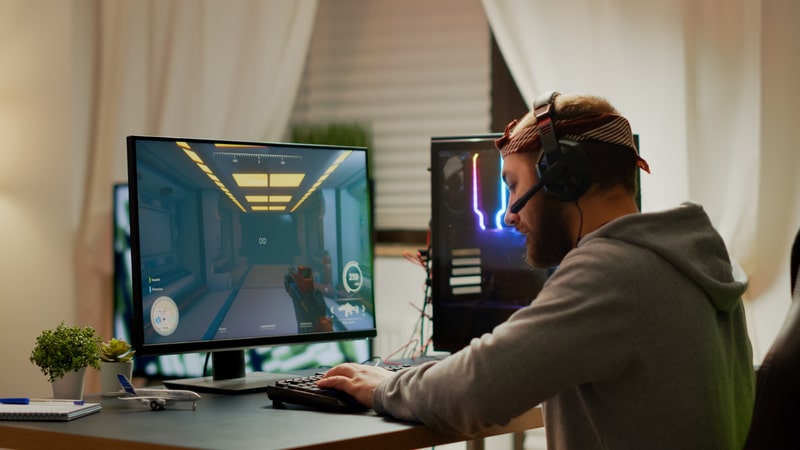
Becoming a board game designer is an exciting journey that blends creativity, strategy, and passion for gaming. Crafting engaging experiences for players requires a mix of skills, from ideation and mechanics design to testing and refinement.
Whether you’re drawn to classic strategy games or innovative storytelling adventures, the path to becoming a board game designer involves several key steps. By embracing your love for games, studying existing designs, and honing your creativity, you can embark on a fulfilling quest to bring your unique game ideas to life. In this guide, we’ll explore the essential stages of becoming a board game designer, offering insights into each step of the process.
How Can I Become A Board Game Designer?
To become a board game designer, follow these steps to embark on a creative and fulfilling journey:
- Passion for Games: Cultivate a deep passion for board games and their mechanics. Playing a wide variety of games will help you understand different styles and strategies.
- Study Existing Designs: Analyze various board games to grasp mechanics, themes, and player experiences. This understanding will shape your design approach.
- Develop Creativity: Cultivate a creative mindset to generate unique game ideas. Think beyond the ordinary and explore novel mechanics and concepts.
- Design and Prototyping: Transform your ideas into tangible designs. Create rough prototypes to test gameplay mechanics and concepts.
- Playtesting: Engage friends, family, or a playtesting group to play your prototypes. Collect feedback to refine and improve your game’s mechanics and balance.
- Iterative Process: Embrace iteration as a vital part of the design process. Continuously modify rules, components, and gameplay based on feedback.
- Thematic Integration: Integrate engaging themes that enhance player immersion and connection to your game.
- Art and Components: Design or collaborate with artists to create appealing visuals for your game. High-quality components contribute to a polished player experience.
- Rulebook Clarity: Craft a clear and concise rulebook that guides players through the game mechanics. A well-written rulebook minimizes confusion.
- Networking: Connect with fellow designers, attend game conventions, and engage in board game communities to learn, share experiences, and gain insights.
- Publisher Pitch or Self-Publishing: Pitch your game to publishers who align with your design. Alternatively, consider self-publishing, managing production, and marketing.
- Feedback Incorporation: Listen to player feedback after playtesting and release. Incorporate valuable insights to enhance your game’s overall experience.
- Continuous Learning: Stay updated on industry trends, mechanics, and player preferences to evolve as a designer.
By embracing these steps, you’ll be on your way to fulfilling your dream of becoming a board game designer, crafting enjoyable and memorable gaming experiences.
What Are The Key Stages Of Becoming A Board Game Designer?
Embarking on the journey to become a board game designer involves several key stages that culminate in the creation of engaging and enjoyable gaming experiences. Here are the stages, combining your specified keywords:
- Passionate Exploration: Begin by immersing yourself in a wide range of board games, including those from the unblocked games 66 categories, to understand different mechanics and styles.
- Gameplay Analysis: Study existing designs, dissecting mechanics, themes, and player interactions to gain insights into what makes games captivating.
- Creative Ideation: Cultivate a creative mindset, generating innovative ideas that set your games apart and capture players’ attention.
- Prototyping and Testing: Transform your ideas into tangible prototypes, then test them extensively with playtesters to fine-tune mechanics and address potential issues.
- Iterative Refinement: Embrace feedback and iteration, constantly improving your designs based on player responses and observations.
- Thematic Integration: Seamlessly weave themes into your game mechanics, creating immersive experiences that resonate with players.
- Component Design: Collaborate with artists to craft visually appealing components, elevating the aesthetic and tactile aspects of your game.
- Rulebook Mastery: Develop clear and comprehensive rulebooks that guide players through your game’s mechanics, minimizing confusion.
- Networking and Learning: Connect with fellow designers, attend industry events, and engage in communities to learn and share insights with peers.
- Pitch or Self-Publish: Consider pitching your game to publishers who align with your vision or explore the self-publishing route for more creative control.
- Feedback Incorporation: Listen to player feedback, both during playtesting and post-release, and use it to enhance the overall player experience.
- Continuous Growth: Stay updated on industry trends and innovations, refining your skills to continuously evolve as a board game designer.
By navigating these stages with dedication and creativity, you can successfully become a board game designer and craft captivating games that resonate with players, whether they’re exploring unblocked Game 66 or other engaging titles.
How Do I Start A Career As A Board Game Designer?
Embarking on a career as a Become Board Game Designer involves a passionate journey of creativity and strategy. Begin by immersing yourself in various board games, including those related to Unbanned From Omegle to understand mechanics. Study existing designs, dissecting themes and player interactions. Cultivate creativity to generate unique game ideas and develop rough prototypes to test mechanics.
Engage playtesters for feedback, enabling iterative refinement. Weave immersive themes into your games for emotional resonance. Networking with fellow designers and enthusiasts can offer insights and collaboration.
Decide whether to pitch your game to publishers or self-publish. Continuously listen to player feedback, incorporating improvements. Stay updated on industry trends for growth. By following these steps, you’ll set the foundation for a rewarding career as a board game designer, crafting experiences that captivate players and leave a lasting impact.
Can You Provide A Guide To Becoming A Board Game Designer?
Yes, I can certainly provide a guide on how to become a board game designer. Starting as a board game designer involves a combination of creativity, strategic thinking, and a deep love for games. Begin by exploring a wide range of board games to understand different mechanics and styles.
Study existing designs, dissecting themes, mechanics, and player interactions to learn from successful games. Cultivate your creative abilities to generate unique game ideas and develop prototypes to test your concepts. Engage in playtesting with a diverse group of players to gather feedback and refine your designs iteratively.
Collaborate with artists to bring your game to life visually and create components that enhance the player experience. Networking with fellow designers and attending industry events can provide valuable insights and connections.
What are the basic steps to pursue a career in board game design?
The pursuit of a career in board game design involves several fundamental steps:
- Passion and Familiarity: Develop a strong passion for board games and become familiar with various genres, Mechanics, and themes. Playing a diverse range of games enhances your understanding.
- Study Existing Designs: Analyze successful board games to grasp game mechanics, dynamics, and design principles. This understanding forms the foundation of your designs.
- Creative Ideation: Cultivate creativity to generate innovative game concepts. Experiment with unique mechanics and engaging themes to set your designs apart.
- Prototype Development: Transform your ideas into tangible prototypes. Create basic versions of your games using simple components to test core mechanics.
- Playtesting and Refinement: Engage playtesters to try your prototypes and provide feedback. Use their insights to refine gameplay, mechanics, and balance.
- Iteration: Embrace iterative design, consistently improving your game based on feedback. Adjust rules, components, and mechanics to enhance the player experience.
- Thematic Integration: Seamlessly integrate themes into your games to enhance immersion and player engagement.
- Pitch or Self-Publishing: Decide whether to pitch your game to publishers or self-publish. Each approach has its pros and cons, so choose based on your goals.
- Feedback Incorporation: Continuously listen to player feedback, applying insights to enhance gameplay and overall design.
- Continuous Learning: Stay updated on industry trends, mechanics, and player preferences. Evolve and adapt as the gaming landscape changes.
By following these basic steps, you’ll be well-equipped to pursue a rewarding career in board game design, creating enjoyable and immersive gaming experiences for players to enjoy.
Conclusion
In conclusion, the path to becoming a Board Game designer involves embracing your passion for games, studying existing designs, fostering creativity, and iteratively refining prototypes. Playtesting, thematic integration, and networking are vital steps.
Whether pitching to publishers or self-publishing, continuous learning, and feedback incorporation ensure growth. The journey requires dedication and adaptability, culminating in the creation of engaging and immersive gaming experiences that resonate with players.


